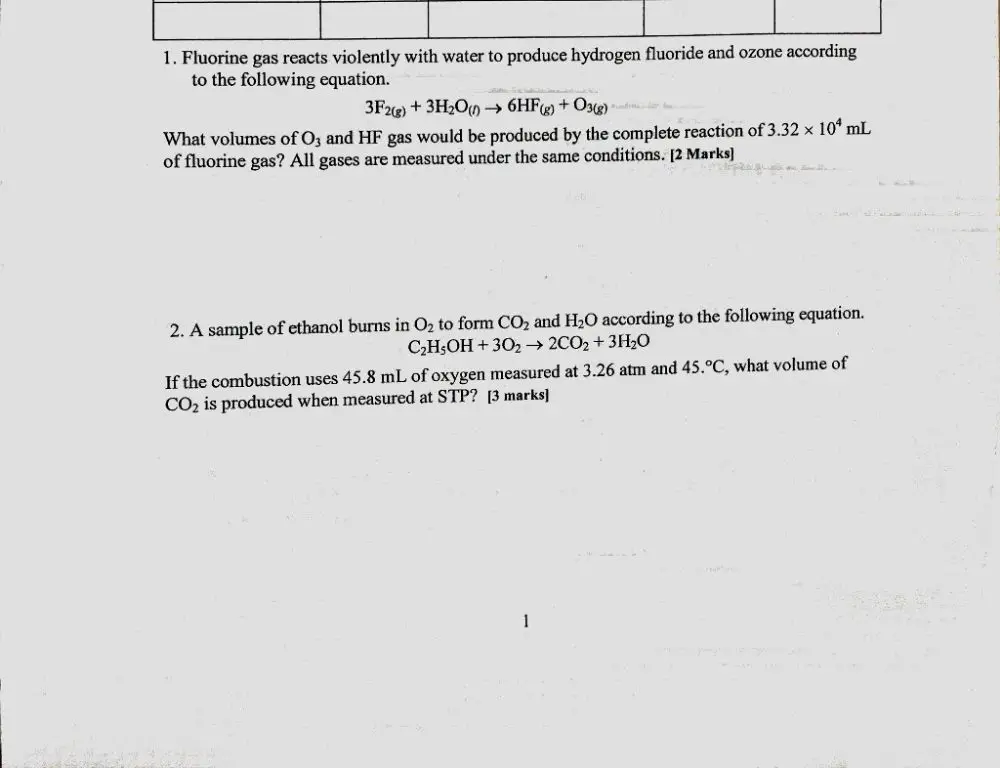What Is The F In The Periodic System?
Fluorine, with the chemical symbol F and atomic number 9, is a halogen element in the periodic table. It is a pungent and highly reactive gas at room temperature. Fluorine was discovered in 1886 by Henri Moissan, who isolated it from the mineral fluorite (calcium fluoride). He named the element after its source, using the Latin root word fluere, meaning flow or flux.
Fluorine has the highest electronegativity of all elements and is the most reactive and most electronegative of all the elements. It is a pale yellow-green gas at room temperature, with atomic weight 18.9984 u and atomic number 9. Fluorine is the lightest member of the halogen family and occurs naturally only in the form of calcium fluoride.
History
Fluorine was first isolated by French chemist Henri Moissan in 1886. He was able to obtain it by the electrolysis of potassium hydrogen difluoride. Moissan spent years trying to isolate fluorine after microscopic amounts were found in fluorite by Humphry Davy in the early 1800s. Even after Moissan succeeded in isolating fluorine, it was incredibly difficult to study due to its extreme reactivity.
For many years after Moissan’s discovery, fluorine was considered too dangerous and uncontrollable to work with. It was incredibly hard for chemists to study its properties and behavior. But in the 1930s, new techniques involving fluorocarbons finally enabled scientists to experiment with fluorine in a much safer way. This paved the way for many important industrial applications of fluorine compounds.
Sources:
https://www.rsc.org/periodic-table/element/9/fluorine
Properties
Fluorine is a pale yellow, diatomic gas with an irritating odor at room temperature and standard pressure. It is the lightest halogen with a density of 1.696 g/L at 0°C. Fluorine has a melting point of -219.62°C and a boiling point of -188.14°C. It is extremely reactive due to its high electronegativity. Some key physical properties of fluorine are summarized below:
- Color – Pale yellow
- Physical state at room temperature – Gas
- Density – 1.696 g/L at 0°C
- Melting point – -219.62°C
- Boiling point – -188.14°C
- Electronegativity – 4.0 on Pauling scale
Fluorine has the highest electronegativity of all elements and is considered the most reactive element. It is so reactive that it can react explosively with many organic and inorganic substances. Fluorine forms compounds with all elements except helium, neon, and argon.
(Sources:
https://www.britannica.com/science/fluorine
Chemical Properties
Fluorine is the most electronegative element, meaning that it is highly reactive and has a strong tendency to attract electrons in chemical bonds. This makes fluorine eager to react with other elements and compounds.
Fluorine reacts explosively and forms compounds with all other elements except oxygen, nitrogen, and the noble gases. It forms binary compounds called fluorides with metals and nonmetals. Some common fluoride compounds include hydrogen fluoride (HF), sulfur hexafluoride (SF6), and sodium fluoride (NaF).
Due to its high reactivity, fluorine displaces the other halogens (chlorine, bromine, and iodine) from their compounds. For example, fluorine reacts violently with water to produce oxygen and hydrogen fluoride.
Fluorine’s electronegativity and small atomic radius allow it to engage in extensive hydrogen bonding in compounds like hydrogen fluoride. This hydrogen bonding contributes to the unique properties of many fluorine compounds.
Overall, the extreme reactivity and electronegativity of fluorine atoms have a significant impact on the chemical properties of compounds containing fluorine.
References:
Fluorine | Uses, Properties, & Facts
Fluorine – Element information, properties and uses

Occurrence and Production
In nature, fluorine exists mainly in the form of fluorides in minerals like fluorite, cryolite, and fluorapatite. It is the 13th most abundant element in the Earth’s crust at 600 ppm. Fluorine rarely occurs in its elemental state in nature due to its high reactivity. The main mineral source for the production of fluorine is fluorite (CaF2), also known as fluorspar. Large deposits of fluorite are found in South Africa, Mexico, China, Mongolia, Russia, Spain, Argentina, and Morocco.
Fluorine is produced commercially by electrolyzing anhydrous hydrogen fluoride containing dissolved potassium fluoride to achieve adequate conductivity, based on the chemical reaction: 2HF → H2 + F2. This method was first used in 1886 and is still the main production method today. The anhydrous hydrogen fluoride is obtained by reacting fluorspar with concentrated sulfuric acid. The fluorine gas generated during electrolysis is passed into solutions of potassium hydroxide to produce potassium fluoride, which is purified by fractional crystallization [1].
China, Mexico, and Mongolia were the world’s largest producers of fluorite in the early 21st century, accounting for over 70% of global production [2]. In the US, fluorspar deposits are found in Colorado, New Mexico, and Alaska. The US was once the world’s largest producer of fluorspar, but now relies heavily on imports for domestic use [3].
Uses
Fluorine is widely used in chemical compounds and consumer products for its ability to lower intermolecular attractive forces between surrounding molecules, allowing greater free movement between them. In particular, fluorine compounds have major industrial applications as refrigerants, pharmaceuticals, and non-stick coatings.
Some of the most notable uses of fluorine compounds include:
- Chlorofluorocarbons (CFCs) were commonly used as refrigerants, propellants, and solvents, though their use is now restricted due to ozone depletion.
- Hydrofluorocarbons (HFCs) replaced CFCs as refrigerants and propellants but have a reduced ozone depletion potential.
- Polytetrafluoroethylene (PTFE), commonly known as Teflon, is a hydrophobic coating used in nonstick pans.
- Fluoropolymers are used in waterproof and breathable fabrics like Gore-Tex.
- Sulfur hexafluoride is used as an insulator in electrical power transformers.
- Uranium hexafluoride is needed to separate uranium isotopes for nuclear power.
- Hydrofluoric acid is an important industrial chemical and ingredient in some household cleaners.
Fluorine compounds thus enable many modern technologies through their unique properties derived from fluorine’s small atomic radius and high electronegativity.
Biological Role
Fluorine plays several important biological roles in the human body and environment. Fluoride ions help strengthen teeth and bones by promoting remineralization and inhibiting demineralization in tooth enamel and bone tissue. Drinking water is often fluoridated with fluoride concentrations between 0.5 to 1.0 ppm to prevent tooth decay while avoiding dental fluorosis (1). Fluoride can also have antibacterial effects in the oral cavity by interfering with bacterial metabolism (2).
In the environment, fluorine is naturally found in soils, rocks, freshwater, and seawater. Fluorine minerals like fluorspar, fluorapatite, and cryolite are the main sources of fluorine in the environment. Fluorine levels in soils typically range from 150 to 300 ppm, but can be higher in fluorine-rich bedrock. Fluorine levels are generally lower in seawater compared to freshwater. Most fluorine in the environment is insoluble and immobile (3).
While fluorine is essential at low doses, at very high doses it can have toxic effects. Skeletal and dental fluorosis can occur with prolonged exposure to high fluoride intakes. Other potential effects of excess fluoride include weakened bones and joints, kidney problems, and neurological effects (4). However, typical environmental exposures to fluorine are not high enough to cause toxicity in most cases.
(1) https://www.rsc.org/periodic-table/element/9/fluorine
(2) https://www.ncbi.nlm.nih.gov/pmc/articles/PMC10099028/
(3) https://en.wikipedia.org/wiki/Biological_aspects_of_fluorine
(4) https://www.ncbi.nlm.nih.gov/pmc/articles/PMC10099028/
Precautions
Fluorine gas can be extremely hazardous to handle. According to the CDC, fluorine has an immediately dangerous to life or health (IDLH) level of 25 ppm, meaning exposure to airborne concentrations above this level poses an immediate threat of loss of life, adverse health effects, or impairment of escape (1). Some key precautions when handling fluorine include:
Wearing proper protective equipment like self-contained breathing apparatus, gloves, face shields, and protective clothing to prevent exposure (2). Using specialized equipment designed for fluorine like nickel valves and Monel piping. Ensuring fluorine cylinders are properly secured. Having an effective fume hood ventilation system and scrubbers. Avoiding ignition sources and flammable materials. Monitoring fluorine levels. Having neutralizing agents like soda ash on hand. Establishing thorough emergency procedures. Restricting access to areas where fluorine is used. Proper training for personnel handling fluorine.
In summary, fluorine gas can be very hazardous so special handling procedures, protective equipment, emergency preparation, and training are essential when working with this chemical.
(1) https://pubs.acs.org/doi/10.1021/acs.chas.1c00097
(2) https://www.chem.purdue.edu/chemsafety/chem/FluorineSafety.html
Notable Compounds
Fluorine forms compounds with nearly all elements, except some noble gases. Some of the most notable fluoride compounds include:
Hydrogen fluoride (HF) – This inorganic compound is used in the production of fluorocarbons and aluminum. It is a colorless, corrosive gas or liquid.
Uranium hexafluoride (UF6) – This is a volatile compound used in the uranium enrichment process. It is highly reactive with water and forms corrosive HF.
Calcium fluoride (CaF2) – Also known as fluorite, this insoluble solid occurs naturally as a mineral. It is used in making optics and enamels.
Sulfur hexafluoride (SF6) – This extremely stable gas is used as an electrical insulator in high-voltage circuit breakers due to its high dielectric strength.
Sodium fluoride (NaF) – This soluble salt of fluorine has many applications including water fluoridation, toothpaste additives, and pesticides.
Conclusion
Fluorine is an important element that displays unique chemical properties due to its high electronegativity. Key facts about fluorine include:
- Fluorine has the atomic number 9 on the periodic table.
- It has high reactivity due to it being the most electronegative element.
- Fluorine commonly forms compounds with metals and nonmetals by forming covalent bonds.
- It is rarely found in its elemental state in nature due to its reactivity.
- Fluorine is produced industrially through electrolysis of hydrogen fluoride.
- It has many uses including fluoridating drinking water, making uranium hexafluoride for nuclear fuel, and manufacturing Teflon.
- Fluorine has biological roles in tooth enamel strength and bone structure.
The unique properties of fluorine make it an extremely important element. Its reactivity allows it to serve many functions across different industries. Understanding the chemistry of fluorine provides insight into why it displays these special characteristics.



